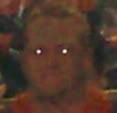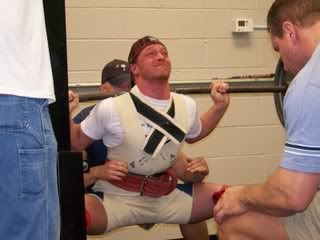Post by gopostal42 on Mar 23, 2007 11:59:56 GMT -5
www.elitefts.com/documents/building_the_deadlift.htm
very good article on many of the most overlooked mechanics of the deadlift and how to make them more efficient.
Building the Deadlift: The Corrective Approach
By Jimmy Smith, CSCS
For www.EliteFTS.com
--------------------------------------------------------------------------------
Everyone tends to focus on the exact same thing when they attempt to improve their deadlift. Some rotate assistance exercises, others attempt to build more hypertrophy, and others pull with different grips and stances. I’m in the fourth group—the group that believes in building the deadlift through corrective methods. While it isn’t as “ball to the walls” as glute ham raises or reverse band pulls, these five quick fixes will build your deadlift and make you more efficient in no time.
Our first issue with the deadlift is the glutes. They’re the muscles we’re relying on the most, and they’re just not doing their job. The forces that pull us out of the “hole” to start the movement are all involved in a triangle of underproduction. Our glutes are our prime mover in hip extension, which is more or less the fundamental movement pattern in the deadlift and its variations. Our hamstrings are also overloaded because of this lack of glute function. When something is overloaded, it won’t fire properly. The third point of our triangle is the front of our hips. This is locked up because of the weak posterior aspect. So without nerd anatomy talk, how do we fix our deadlift?
Corrective fix one: Perform glute bridges and glute medius clams. While these movements might look like “nothing,” performing these pre-exercise will ensure that the glute max and medius are firing properly. It’ll be easier for us to recruit these muscles and use them more effectively.
Corrective fix two: Actively stretch the hamstrings after you train. Our hamstring tightness is mainly a result of neural factors, but we can go a long way in restoring their proper length by actively stretching them post-workout. What is an active stretch? In an active stretch, you simply move your hips from side to side. This allows us to target fibers in the frontal plane.
Corrective fix three: Use the foam roller on the quads. Since the glutes and hamstrings aren’t doing their jobs, the quads will become overactive and tight. Tight quads pull our knees further forward toward the bar. Any deadlifter knows that the knees shouldn’t be over the bar. By rolling the quads, we can break up any scar tissue in the area and limit the forward pull during our attempts.
Corrective fix four: Static stretch the psoas post-workout. The main hip flexor is typically tight and will limit the body’s ability to straighten out. Stretching it post-workout will help guarantee that it maintains a normal length.
Corrective fix five: Use the foam roller for the adductors. The adductors are a direct opposing muscle to the glute medius. By breaking up the tightness in the adductors, we help the glute medius fire more. The adductors are also powerful hip extensors. For anyone who wants to pull heavy, they’ll take anything they can get. Breaking up the “junk” on the adductors can result in an increased pull.
There you have it. Consistently performing these five quick fixes will clean up your deadlift in no time and have you blasting through plateaus.
Jimmy Smith, CSCS, is a body enhancement coach who has helped individuals and athletes of all levels from high school to the top collegiate and national ranks reach their elite performance and body enhancement goals. He specializes in performance and body enhancement as well as biomechanics as it relates to injury rehabilitation and human movement.
Elite Fitness Systems strives to be a recognized leader in the strength training industry by providing the highest quality strength training products and services while providing the highest level of customer service in the industry. For the best training equipment, information, and accessories, visit us at www.EliteFTS.com.
very good article on many of the most overlooked mechanics of the deadlift and how to make them more efficient.
Building the Deadlift: The Corrective Approach
By Jimmy Smith, CSCS
For www.EliteFTS.com
--------------------------------------------------------------------------------
Everyone tends to focus on the exact same thing when they attempt to improve their deadlift. Some rotate assistance exercises, others attempt to build more hypertrophy, and others pull with different grips and stances. I’m in the fourth group—the group that believes in building the deadlift through corrective methods. While it isn’t as “ball to the walls” as glute ham raises or reverse band pulls, these five quick fixes will build your deadlift and make you more efficient in no time.
Our first issue with the deadlift is the glutes. They’re the muscles we’re relying on the most, and they’re just not doing their job. The forces that pull us out of the “hole” to start the movement are all involved in a triangle of underproduction. Our glutes are our prime mover in hip extension, which is more or less the fundamental movement pattern in the deadlift and its variations. Our hamstrings are also overloaded because of this lack of glute function. When something is overloaded, it won’t fire properly. The third point of our triangle is the front of our hips. This is locked up because of the weak posterior aspect. So without nerd anatomy talk, how do we fix our deadlift?
Corrective fix one: Perform glute bridges and glute medius clams. While these movements might look like “nothing,” performing these pre-exercise will ensure that the glute max and medius are firing properly. It’ll be easier for us to recruit these muscles and use them more effectively.
Corrective fix two: Actively stretch the hamstrings after you train. Our hamstring tightness is mainly a result of neural factors, but we can go a long way in restoring their proper length by actively stretching them post-workout. What is an active stretch? In an active stretch, you simply move your hips from side to side. This allows us to target fibers in the frontal plane.
Corrective fix three: Use the foam roller on the quads. Since the glutes and hamstrings aren’t doing their jobs, the quads will become overactive and tight. Tight quads pull our knees further forward toward the bar. Any deadlifter knows that the knees shouldn’t be over the bar. By rolling the quads, we can break up any scar tissue in the area and limit the forward pull during our attempts.
Corrective fix four: Static stretch the psoas post-workout. The main hip flexor is typically tight and will limit the body’s ability to straighten out. Stretching it post-workout will help guarantee that it maintains a normal length.
Corrective fix five: Use the foam roller for the adductors. The adductors are a direct opposing muscle to the glute medius. By breaking up the tightness in the adductors, we help the glute medius fire more. The adductors are also powerful hip extensors. For anyone who wants to pull heavy, they’ll take anything they can get. Breaking up the “junk” on the adductors can result in an increased pull.
There you have it. Consistently performing these five quick fixes will clean up your deadlift in no time and have you blasting through plateaus.
Jimmy Smith, CSCS, is a body enhancement coach who has helped individuals and athletes of all levels from high school to the top collegiate and national ranks reach their elite performance and body enhancement goals. He specializes in performance and body enhancement as well as biomechanics as it relates to injury rehabilitation and human movement.
Elite Fitness Systems strives to be a recognized leader in the strength training industry by providing the highest quality strength training products and services while providing the highest level of customer service in the industry. For the best training equipment, information, and accessories, visit us at www.EliteFTS.com.



